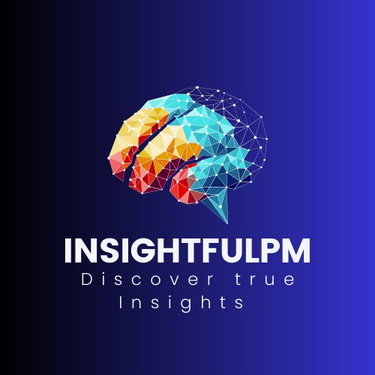Resource Forecasting: The Missing Link in Leadership Decision-Making
In an era where AI and predictive analytics drive decision-making, resource forecasting remains surprisingly outdated. Delivery leaders often default to intuition, static spreadsheets, or reactive staffing models—leading to costly inefficiencies and missed opportunities.
Praful Pujar
5/29/20253 min read


Many leaders continue to rely on intuition, past experiences, or static spreadsheets instead of using scientific models that dynamically adjust and improve decision-making.
The result? Projects often suffer from misaligned workforce allocation, leading to bottlenecks, rushed hiring decisions, and missed deadlines. While companies invest in talent acquisition, onboarding, and training, poor forecasting creates inefficiencies that undermine these efforts, leaving teams underutilized or overwhelmed.
So why do leaders still resist advanced forecasting methods? And how can AI-driven forecasting tools transform the way organizations allocate, optimize, and scale their workforce?
The Leadership Gap in Resource Forecasting
Delivery leaders are responsible for ensuring smooth project execution and optimal team performance, yet one of the most critical elements—accurate forecasting—is often overlooked or poorly implemented. Traditional forecasting methods are reactive rather than predictive, leaving organizations vulnerable to resource shortages or inefficiencies.
🔎 What does poor forecasting look like in real-world scenarios?
A large-scale software implementation gets delayed because senior architects were double-booked across multiple projects.
A digital transformation initiative stalls due to last-minute hiring struggles caused by a lack of forward-planning.
A team of engineers faces weeks of downtime between projects simply because leadership failed to forecast workload distribution.
Sound familiar? These are the hidden costs of poor forecasting, often dismissed as operational hiccups. But over time, these inefficiencies compound, reducing profitability and draining productivity.
Let’s break down the key flaws in outdated forecasting approaches:
✅ Static Estimates – Conventional forecasting relies on rough approximations rather than real-time analytics, failing to adapt to dynamic project needs.
✅ Delayed Adjustments – Leaders often realize resource gaps too late, leading to rushed hiring, overworked teams, or project delays.
✅ Overspending & Burnout – Poor forecasting leads to unnecessary hires, budget overruns, or excessive workload distribution, reducing employee satisfaction.
Why Delivery Leaders Must Prioritize AI-Powered Forecasting
The stakes are too high for leaders to rely on manual forecasting methods. AI-driven tools eliminate guesswork and provide precise, adaptable insights by analyzing multiple data points, including:
✔️ Historical trends – Learning from past resource utilization patterns to predict future workforce needs.
✔️ Live project data – Integrating ongoing workstreams for accurate workforce projections.
✔️ Heatmaps & risk alerts – Highlighting resource gaps and bottlenecks before they become a crisis.
✔️ Role-based optimization – Breaking down capacity by department and skill set for precise workforce planning.
Imagine having real-time dashboards that notify leaders months in advance of impending resource shortages. Instead of reacting to staffing issues after they happen, leaders can proactively adjust hiring strategies, redistribute workloads, and avoid last-minute escalations.
How Leaders Can Take Action Today
Shifting to AI-powered forecasting doesn’t mean a complete overhaul. Instead, start small with targeted changes that create big impact. Here’s how to get started today:
1️⃣ Rethink Utilization Strategies
🔹 Assess real-time utilization data: Identify overbooked and underutilized teams before project deadlines suffer.
🔹 Prevent burnout: Avoid excessive workload spikes by optimizing resource distribution across teams.
🔹 Ensure alignment: Validate whether resource allocation matches project priorities for strategic efficiency.
2️⃣ Adopt Predictive Forecasting Tools
🔹 Ditch static spreadsheets: Move beyond outdated models to dynamic forecasting dashboards.
🔹 Track workforce trends: Use AI-powered tools to analyze hiring cycles, project timelines, and role-specific capacity planning.
🔹 Integrate with portfolio management: Align forecasting insights with project roadmaps for better execution and planning.
3️⃣ Bridge the Hiring Gap Proactively
🔹 No more rushed hiring: Forecast hiring needs months in advance rather than scrambling at the last minute.
🔹 Prioritize cross-skilling: Identify resource gaps internally before resorting to external hires.
🔹 Optimize onboarding cycles: Reduce transition time by forecasting workforce shifts ahead of project rollouts.
When leaders embrace proactive forecasting, workforce optimization becomes a natural, data-driven process, rather than a last-minute leadership scramble.
Get started with proactive planning using our plug-and-play UtilizationInsights that visualizes team capacity, forecasts hiring needs, and prevents overload
Final Thought: Smart Forecasting Is the Key to Scaling Effectively
The future of delivery leadership hinges on data-backed resource forecasting. Relying on experience alone is no longer enough—leaders must embrace scientific calculations to optimize workforce planning, improve delivery speed, and drive sustainable growth.
Are you ready to move beyond instinct and lead with precision?
